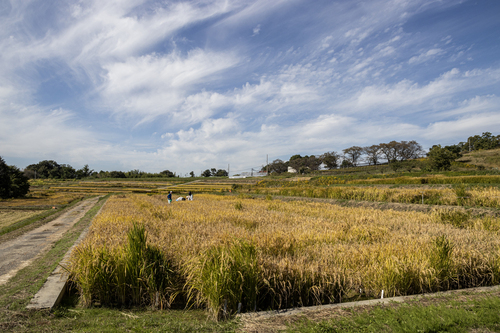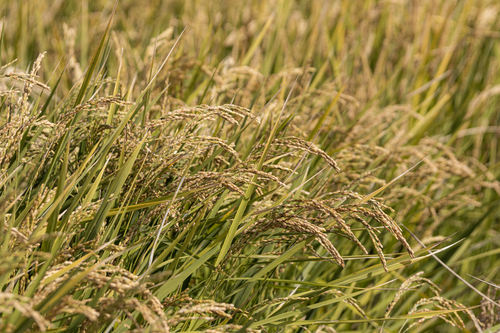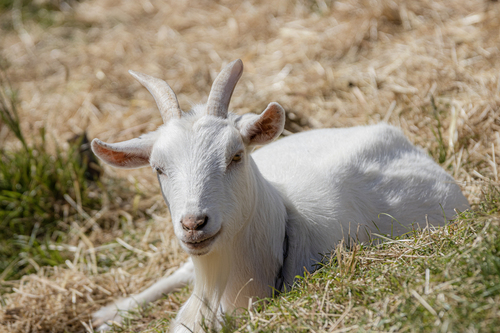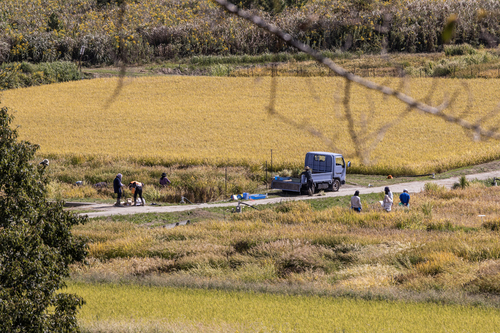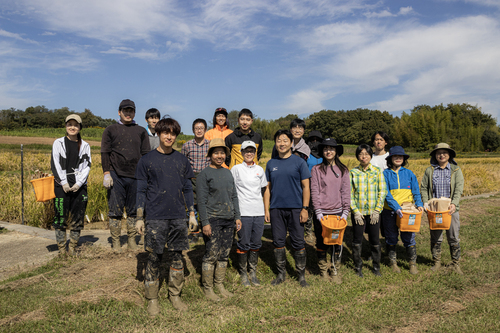When you imagine researchers from a top university at work, your mind likely goes to images of bright white labs, starched lab coats, hushed voices discussing results as chemicals are measured into flasks. But the reality is that some of our brightest minds spend half their time up to their knees in mud, on a farm about 30 minutes' drive east of Higashiyama Campus.
Nagoya University opened its bioagriculture research facility at Togo in 1962, with 28 hectares of land including rice paddies, fields for cabbage and maize, housing for goats and cattle, and greenhouses for vegetables. Although the science of plant and animal genetics and breeding is done in the laboratory, the rearing of plants and livestock on the farm is an equally important part of the research. Without specimens, there is nothing to study, after all. I visited the farm in late October to witness some of the most vital harvesting that will take place this year.
Professor Motoyuki Ashikari of the Graduate School of Bioagricultural Sciences starts the day assigning roles to his team of students and staff, who have come to collect seed specimens from the strains of rice plants they have been developing. Each rice plant is numbered, and the members of the lab pick carefully through the rows of chest-high plants, plucking the heads from one after another and placing them into numbered envelopes to be taken back to the laboratory and analyzed. Professor Ashikari and his team use genome analysis and selective breeding to create new, non-GMO strains of rice that not only produce a higher grain yield, but are also more resistant to environmental stressors such as flooding, drought and heat.
'Nagoya University's strength lies in our ability to both grow our own rice and do highly detailed genome analysis in the lab, feeding those results straight back into the field' explains Ashikari. 'When I began the rice project, people told me it was impossible, but ten years later we have nearly perfected the product'. The team's project, the WISH Project, is developing a hardy strain of rice which they aim to put into field trials in Kenya, one of the toughest farming environments in the world. If the Kenyan trials are a success, the WISH rice will be made available on a nonprofit basis to farmers around the world.
Rice is not the only agricultural product being improved on the farm, however. Taking me across to the other side of the farm, Professor Ashikari introduces me to a couple of dozen cattle and a herd of goats. Research is ongoing into improving the milk production and fertility of livestock, especially in the face of adverse environmental conditions that may be brought about by climate change.
From the hill on which the cattle shed stands, we look down at the students gathering the rice. The bucolic scene feels at odds with the demanding, fast-paced lives led by the members of a large university lab. 'Everything moves a little slower out here,' Ashikari says to me. 'It's a lovely place to escape to.'
It is evident that the farm is a place that holds a special significance in the hearts of the researchers from the Graduate School of Bioagricultural Sciences, and it is one of the unique facilities that ensures that Nagoya University researchers are able to make the most of their talent in producing life-changing research.
Thanks to Professor Motoyuki Ashikari and his team for the opportunity to visit the farm and observe their work.
Text and photos by Edmund Rhind-Tutt, Nagoya University International Communications Office
Read More
Nagoya University Graduate School of Bioagricultural Sciences
WISH Project
Professor Motoyuki Ashikari at the Nagoya University Faculty Database

